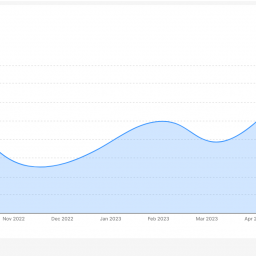Managing Remote Teams with Mobile Workforce Management Software
The rise of remote work has transformed the way businesses operate, allowing teams to collaborate and deliver results from different locations. However, managing remote teams comes with its own set of challenges, such as coordinating schedules, monitoring productivity, ensuring seamless communication, and optimizing resource allocation. To address these challenges and empower remote teams to thrive, many organizations are turning to mobile workforce management software. This specialized tool offers a range of features and benefits that streamline remote team management, enhance communication, and drive productivity. In this article, we explore the impact and advantages of using mobile workforce management software to manage remote teams effectively.
1. Real-time Communication and Collaboration
Effective communication is the cornerstone of successful remote team management. Mobile workforce management software offers instant messaging, video conferencing, and collaboration tools that enable remote team members to communicate in real-time.
Real-time communication fosters better collaboration, eliminates delays in decision-making, and enhances overall team dynamics.
2. Seamless Task Assignment and Monitoring
Assigning tasks to remote team members can be challenging without visibility into their availability and skills. Mobile workforce management software allows managers to assign tasks to team members based on their skills, location, and workload.
Furthermore, the software provides a centralized platform to track task progress and completion, ensuring that everyone is on the same page regarding project milestones and deadlines.
3. Efficient Time and Attendance Tracking
Tracking remote employees’ work hours accurately is essential for payroll processing and performance evaluation. Mobile workforce management software offers time and attendance tracking features, such as GPS-based clock-ins and clock-outs.
By automating time tracking, managers can ensure fair compensation for remote team members and monitor overall work hours for better resource allocation.
4. Optimized Resource Allocation
Remote teams may be spread across different time zones and locations, making resource allocation a crucial aspect of management. Mobile workforce management software allows managers to optimize resource allocation based on team members’ availability and workloads.
By allocating resources efficiently, managers can prevent burnout, ensure work is distributed evenly, and maximize productivity.
5. Performance Tracking and Goal Setting
Setting clear performance goals and tracking progress is essential for remote team members. Mobile workforce management software provides tools for setting objectives, tracking key performance indicators (KPIs), and providing feedback.
Transparent performance tracking helps remote team members stay focused and motivated to achieve their goals.
6. Mobile Access to Information and Resources
Remote teams often work on-the-go or from various locations. Mobile workforce management software provides mobile applications that allow team members to access schedules, task details, and important documents from their smartphones or tablets.
With mobile access to information and resources, remote teams can remain productive and responsive regardless of their physical location.
7. Training and Development
Continuous learning and development are essential for remote team members to stay relevant in their roles. Mobile workforce management software may include training and development modules that offer educational resources and courses.
By investing in remote team members’ professional growth, organizations can foster a skilled and motivated workforce.
8. Data Analytics and Reporting
Data-driven insights are valuable for making informed decisions and improving remote team management. Mobile workforce management software provides data analytics and reporting features, offering valuable data on team performance, productivity, and resource utilization.
By analyzing this data, managers can identify trends, address challenges, and implement improvements to enhance remote team efficiency.
Conclusion:
As remote work becomes increasingly prevalent, managing remote teams efficiently is essential for business success. Mobile workforce management software has emerged as a game-changer, empowering organizations to overcome the challenges of remote team management and drive productivity.
From real-time communication and seamless task assignment to efficient time tracking, optimized resource allocation, performance tracking, mobile access to information, training and development, data analytics, and reporting, this software offers a comprehensive suite of tools tailored to the unique needs of managing remote teams.
The adoption of mobile workforce management software is not just a technological advancement; it represents a strategic investment in fostering collaboration, driving productivity, and ensuring the success of remote teams. As businesses continue to embrace remote work and distributed teams, mobile workforce management software will remain an indispensable tool for maximizing remote team potential and achieving organizational goals. By empowering remote teams with the right tools and resources, organizations can thrive in a dynamic and ever-changing work landscape.
















